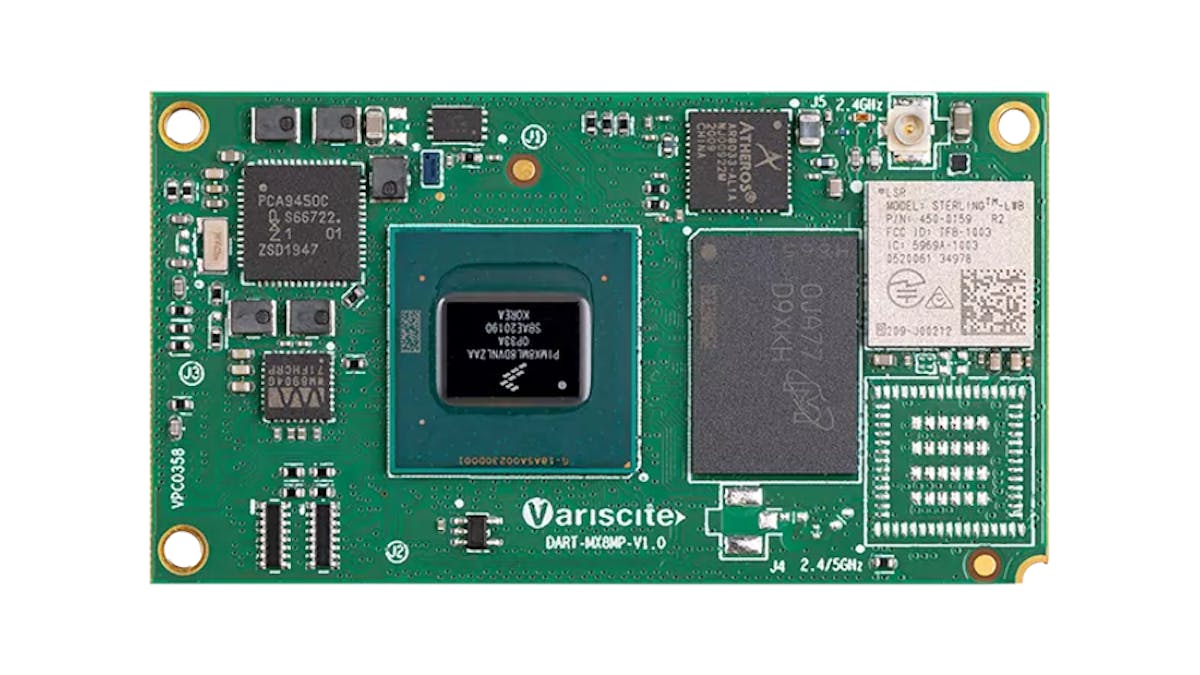Variscite Unveils a High-Performance System-on-Module for High-End Edge Computing: The DART-MX95
Pricing and availability will have to wait, however, until NXP formally puts the i.MX 95 it hosts into general availability.

Embedded computing specialist Variscite has announced an upcoming system-on-module (SOM) built for high-end edge computing, including on-device artificial intelligence (AI) and machine learning (ML) workloads, built around the NXP Semiconductors i.MX 95 application processor: the DART-MX95.
"As a Platinum partner with early access to NXP's technology, Variscite has an enormous advantage in developing the next-gen system on modules that give our customers the ability to create embedded devices of the future today," boasts Variscite's Ofer Austerlitz of the company's upcoming launch. "The DART-MX95 is a powerful addition to the respected DART Pin2Pin product family, broadening scalability prospects and guaranteeing future-proof applications."

The DART-MX95, which is designed to be a drop-in replacement for other DART Pin2Pin modules, will include up to six Arm Cortex-A55 processor cores running at up to 2GHz, a 250MHz Cortex-M7 and an 800MHz Cortex-M33 as coprocessors, up to 16GB of LPDDR5 memory, up to 128GB of eMMC storage, and a high-performance neural network coprocessor designed to accelerate edge-AI applications.
The modules will also include an Arm Mali 3D-capable graphics processor with OpenGL ES 3.2, Vulkan 1.2, and OpenCL 3.0 support, dual-band 802.11ax Wi-Fi, with optional support for IEEE 802.15.4 and Bluetooth 5.3 with Bluetooth Low Energy (BLE), offer two gigabit Ethernet connections and a 10-gig-Ethernet connection, offer two PCI Express Gen.3 lanes, two USB 3.0 ports, CAN FD bus, UART/USART, I2C/I3C, quad-SPI buses, and an on-board analog-to-digital converter. For displays, there will be two MIPI Display Serial Interface (DSI) connections with 4k-resolution support and two Low-Voltage Differential Signalling (LVDS) connections, with dual MIPI Camera Serial Interface 2 (CSI2) connections plus analog audio in and out.
Precise specifications will vary by device model chosen, and Variscite isn't yet sharing pricing — waiting, instead, until when NXP has officially pushed the i.MX 95 to general availability, at which point Variscite will make the modules and their evaluation kits available to order.
More information on the module is available on the Variscite website.
Freelance journalist, technical author, hacker, tinkerer, erstwhile sysadmin. For hire: freelance@halfacree.co.uk.

